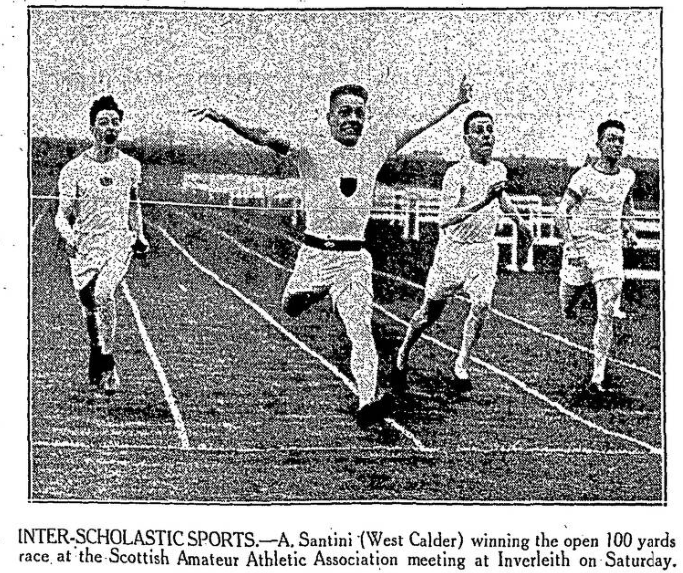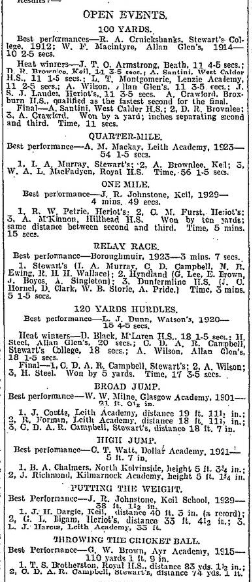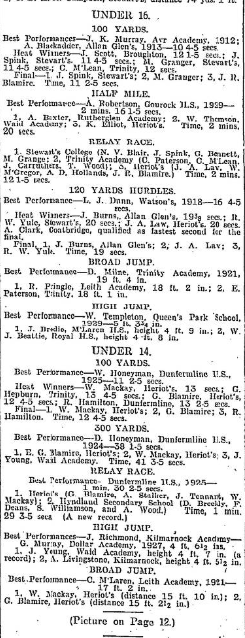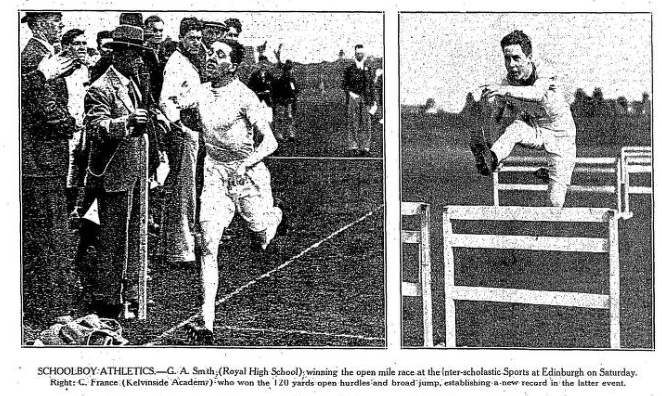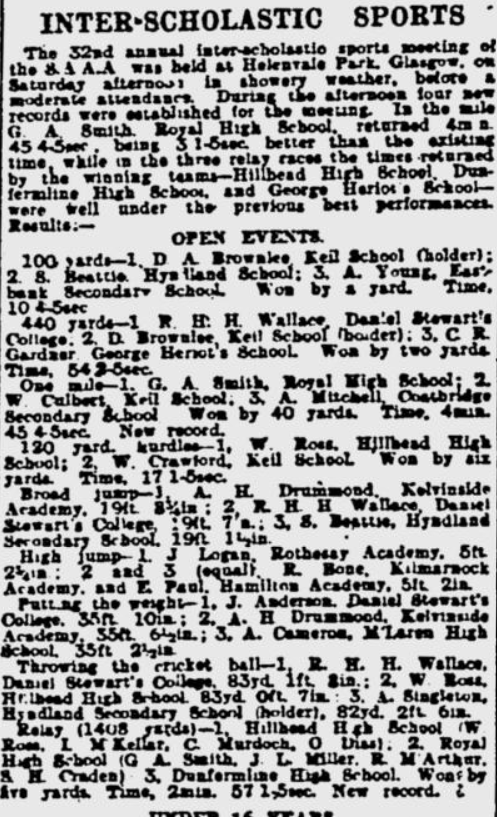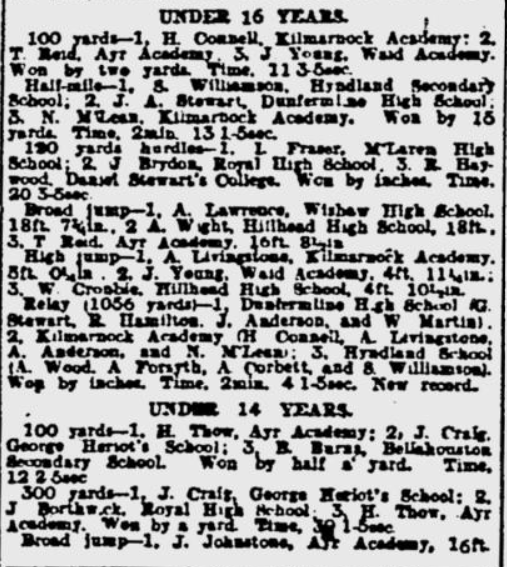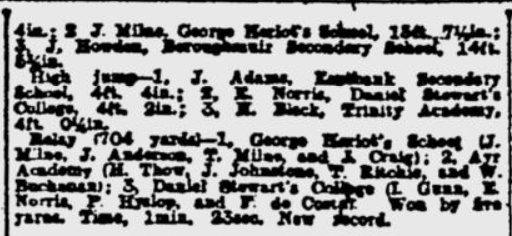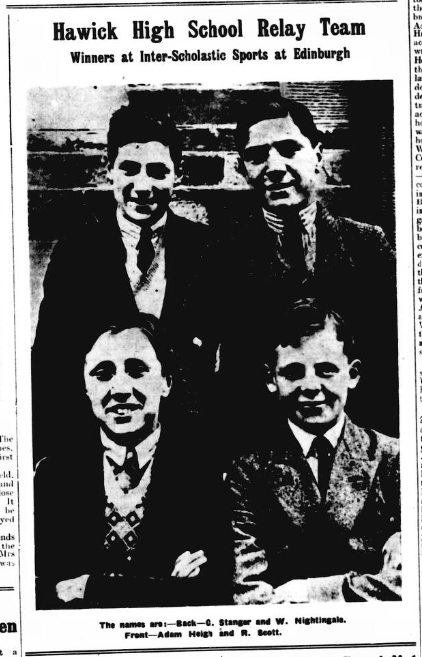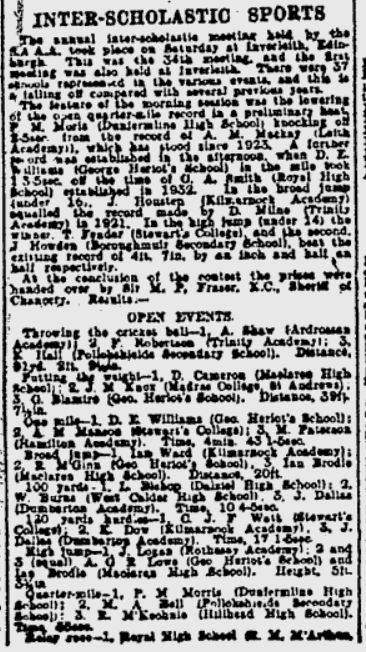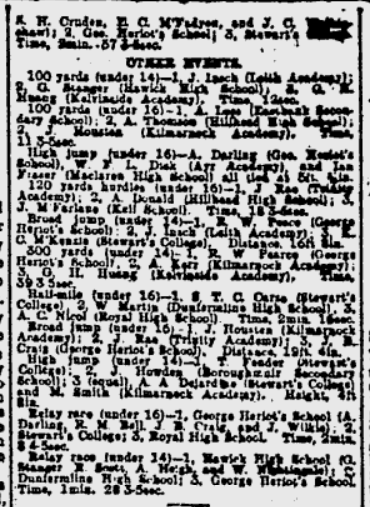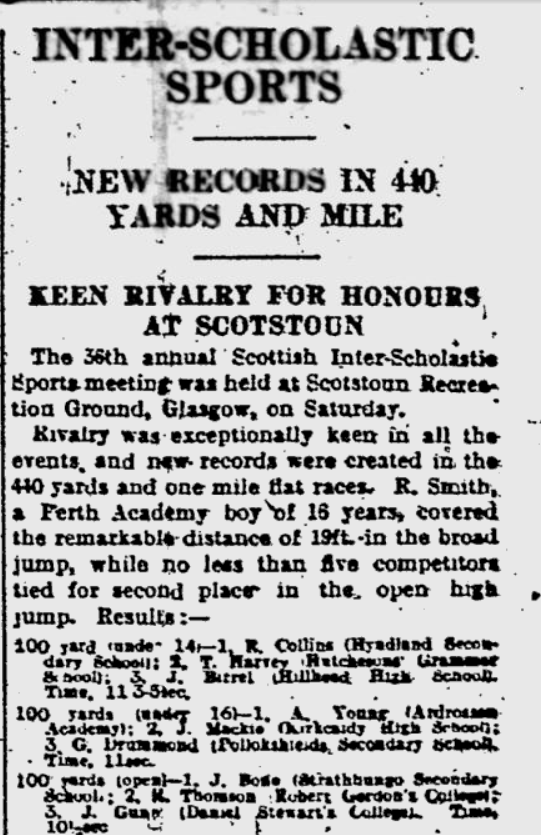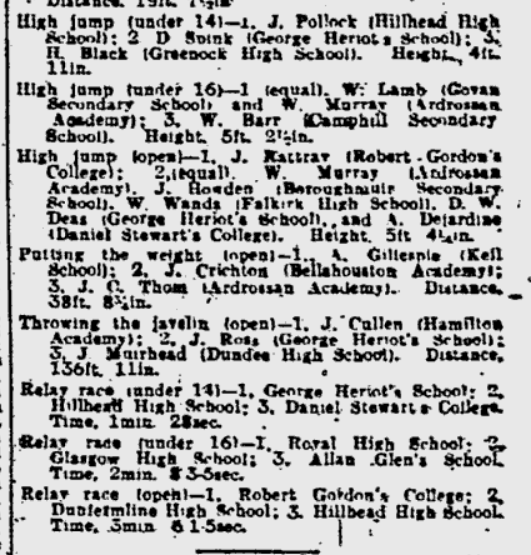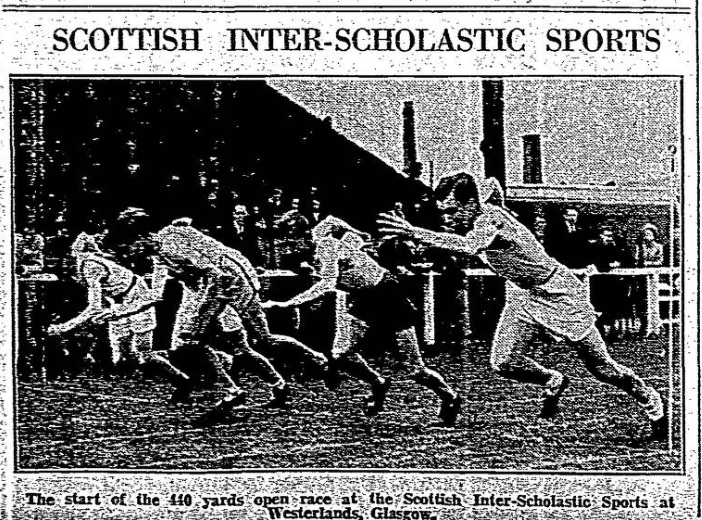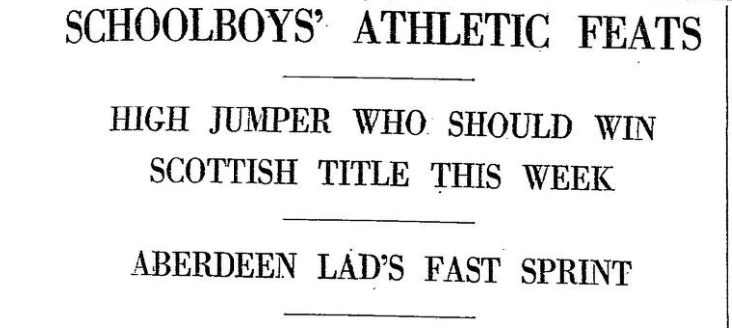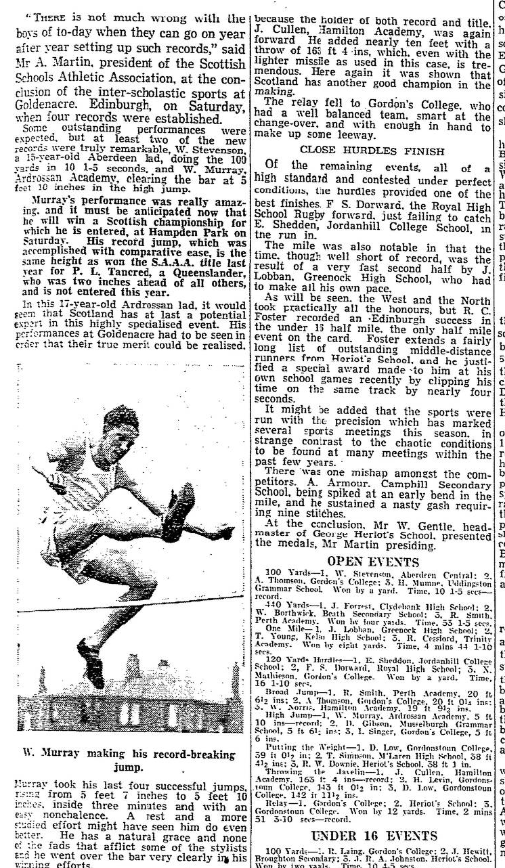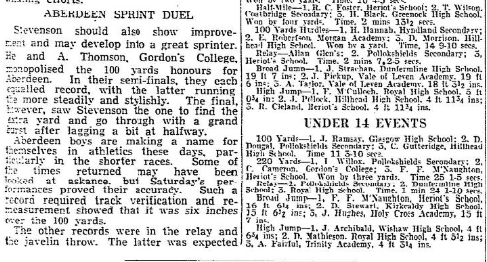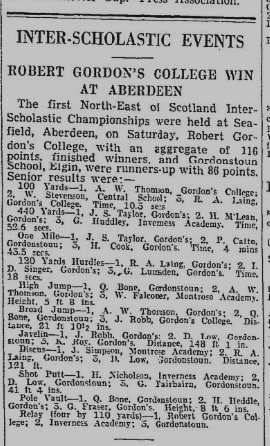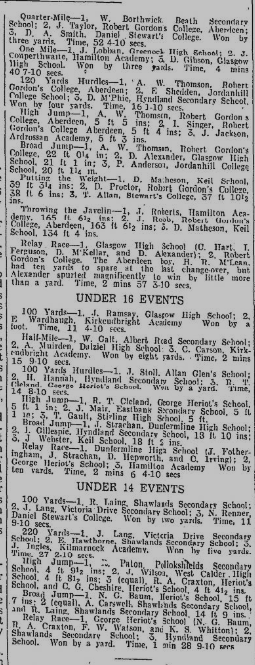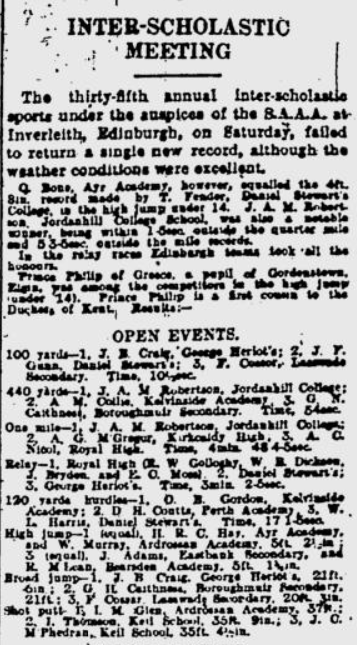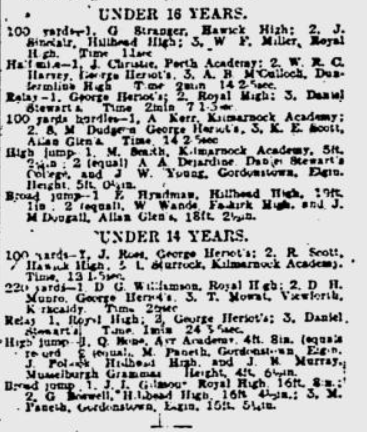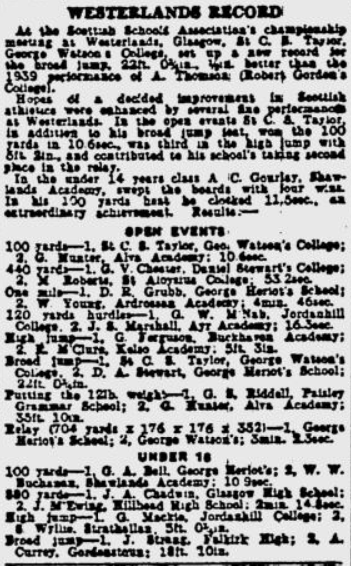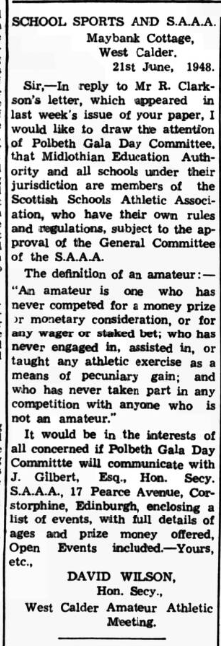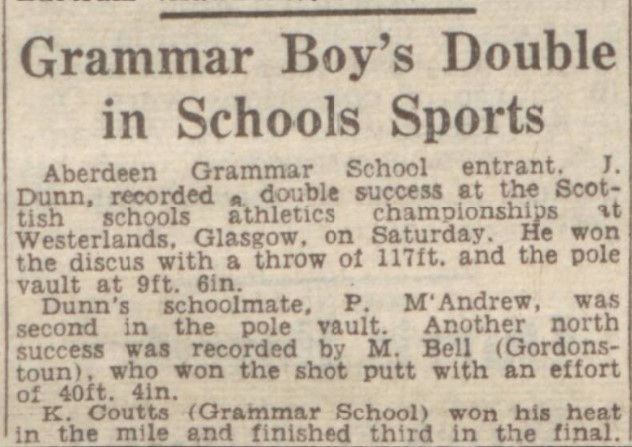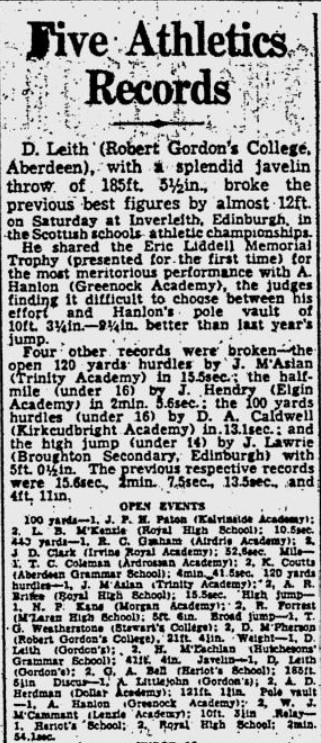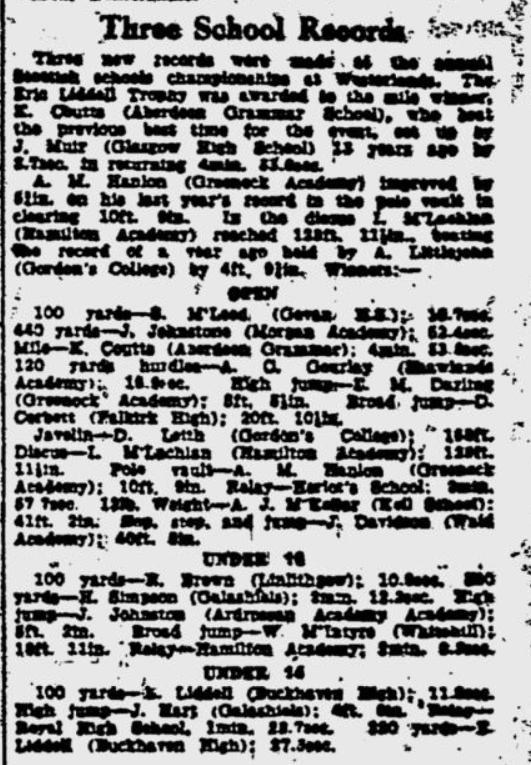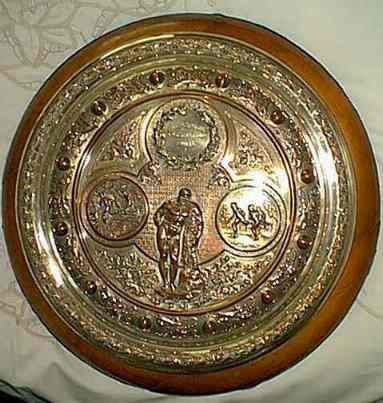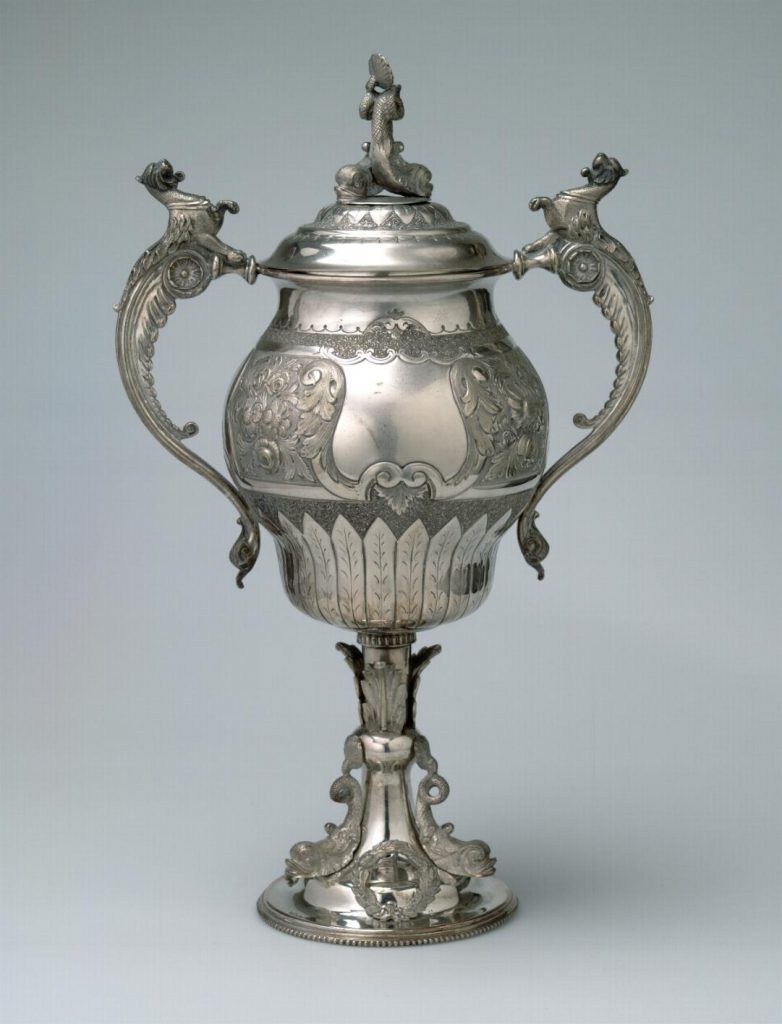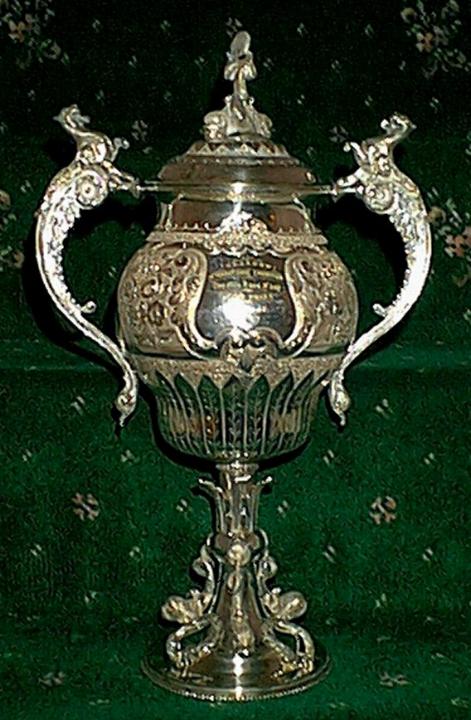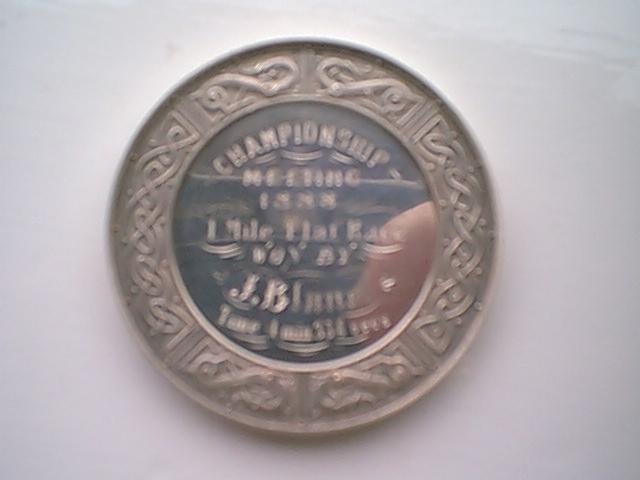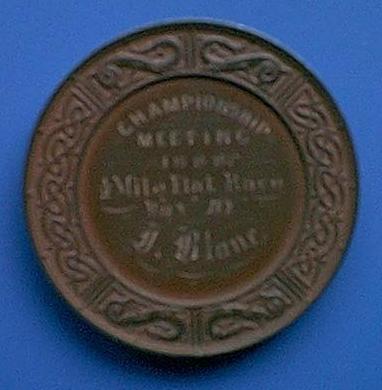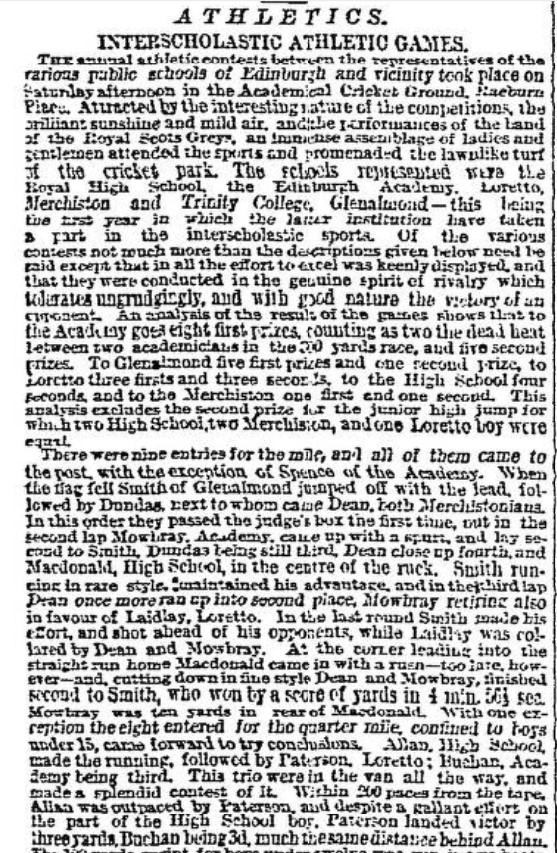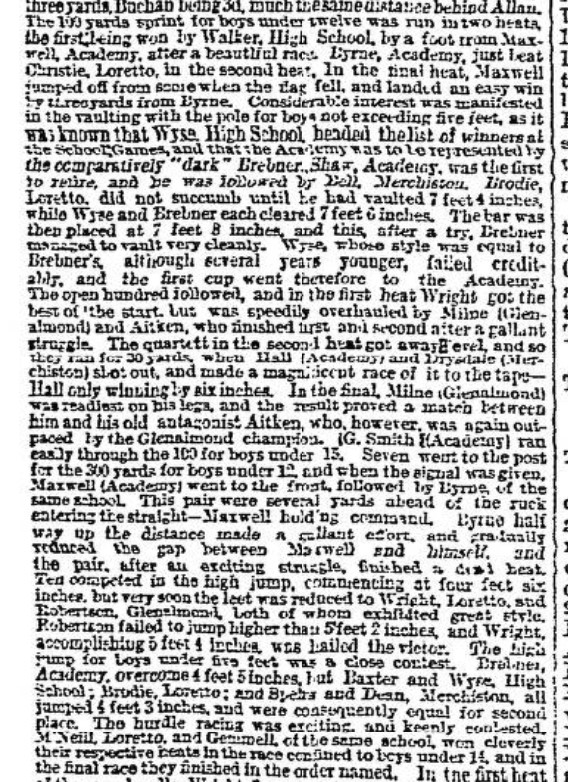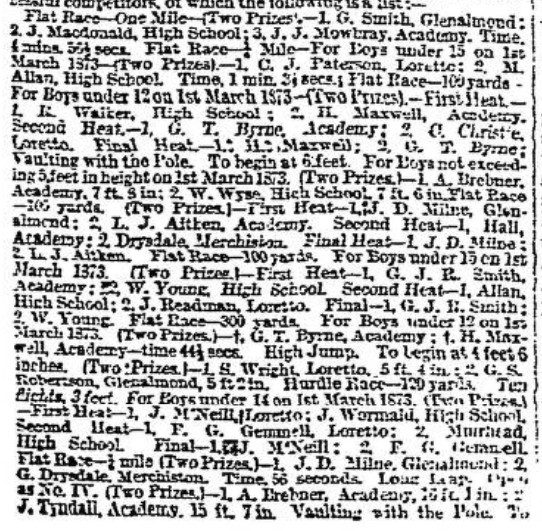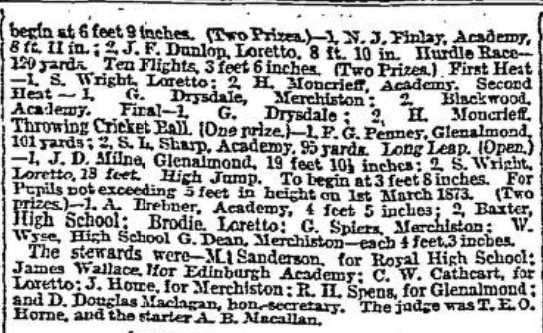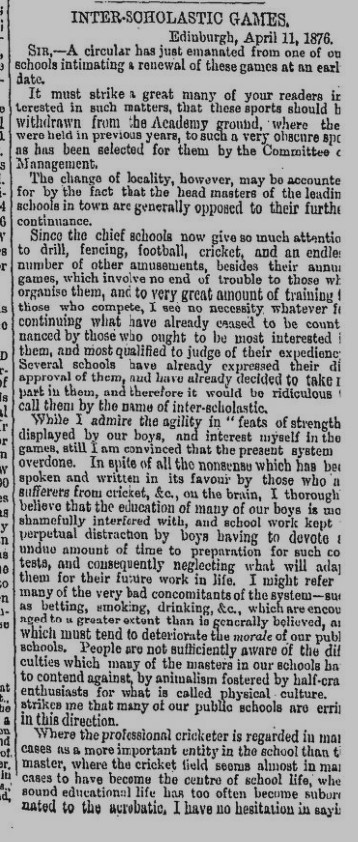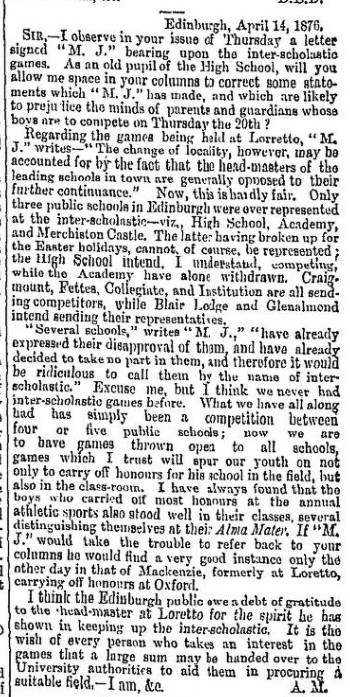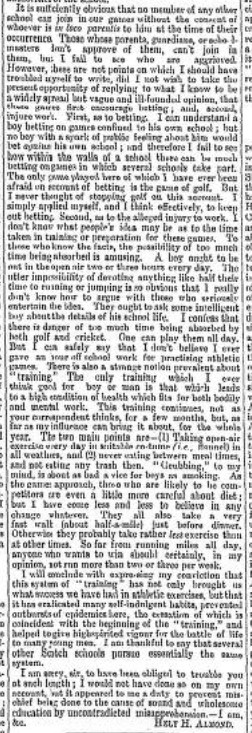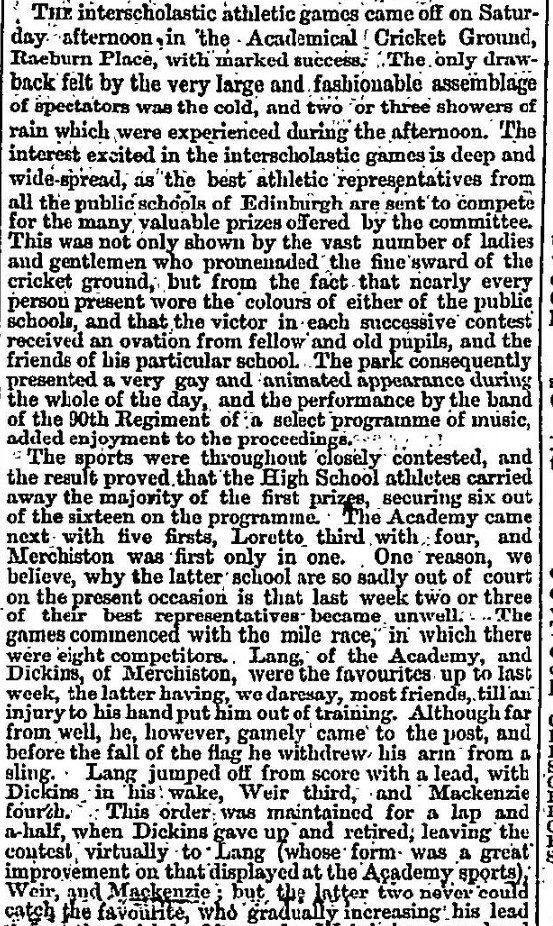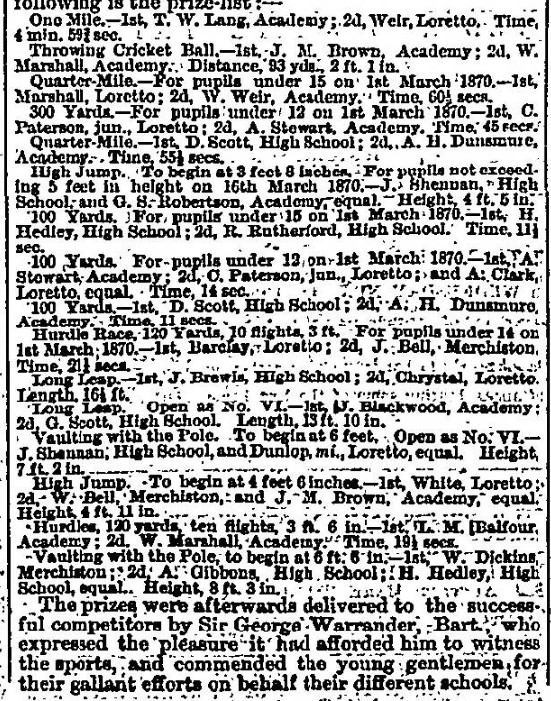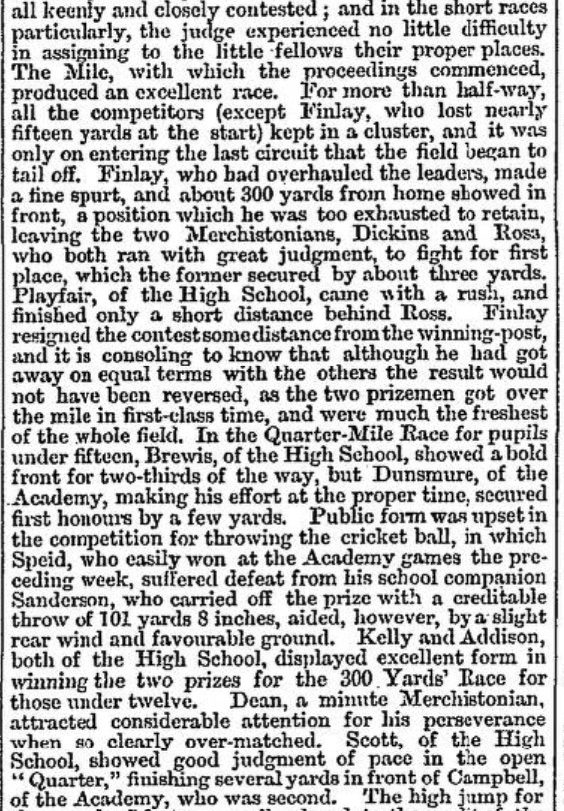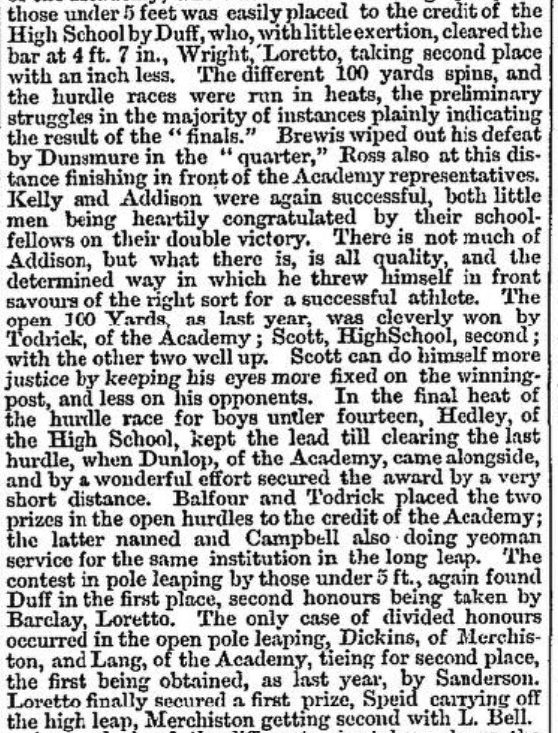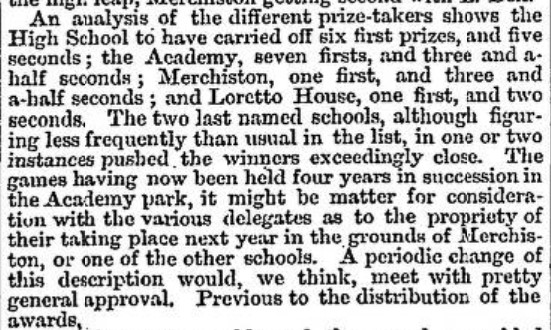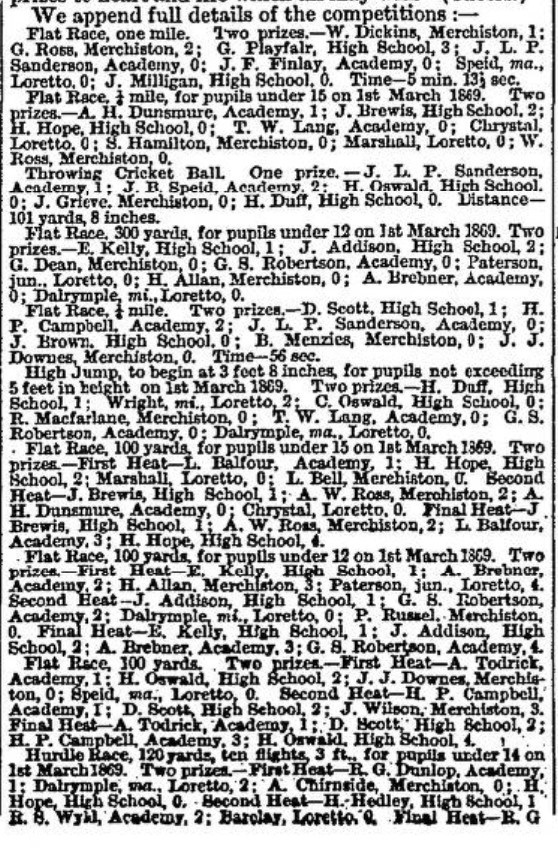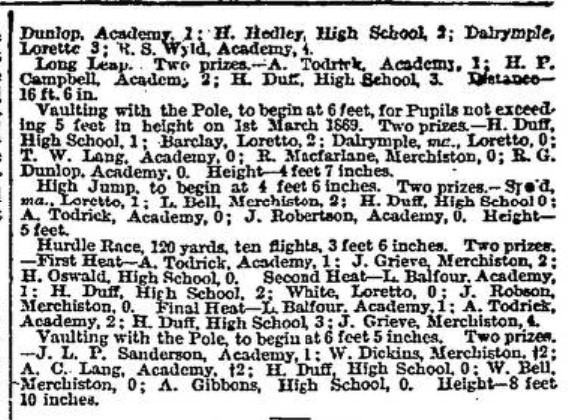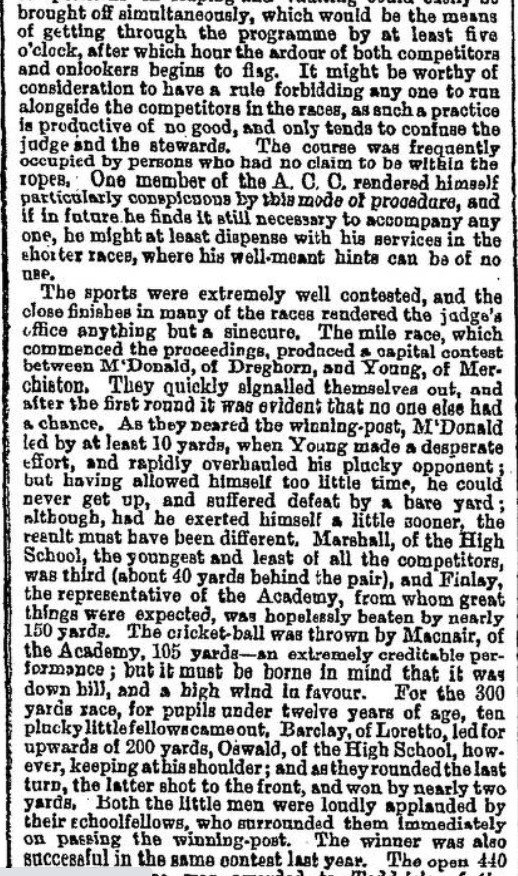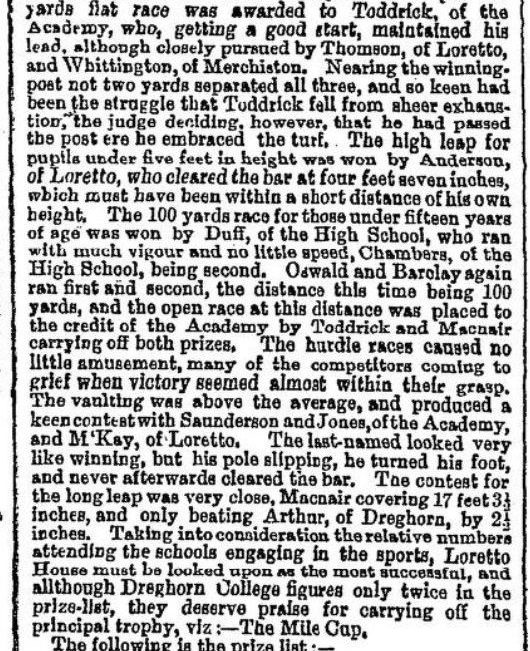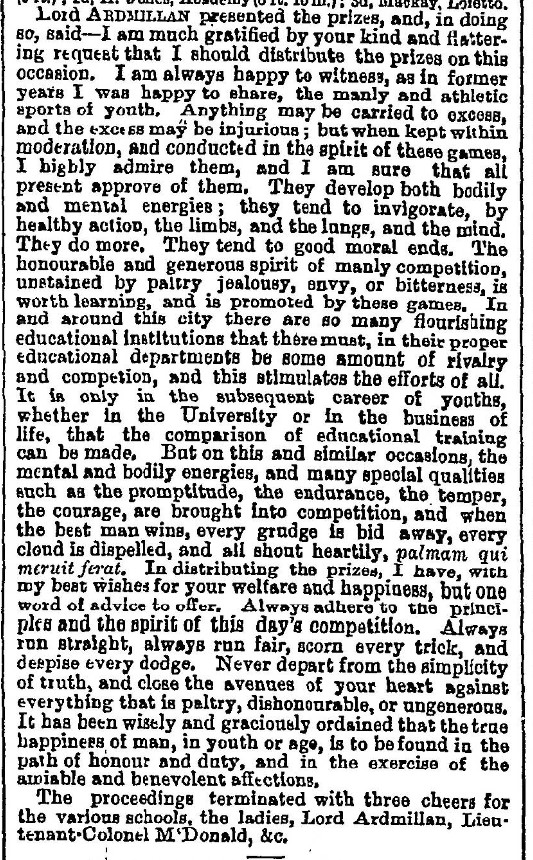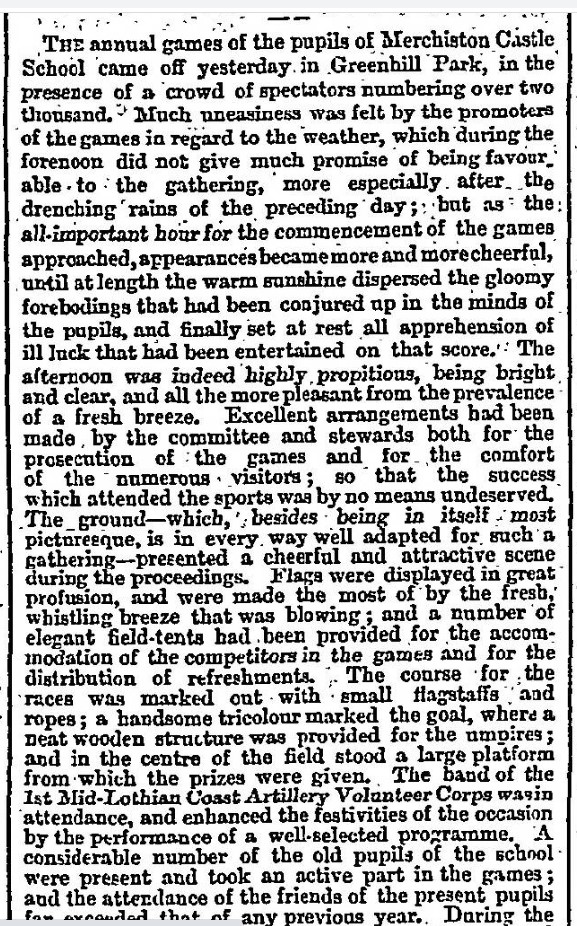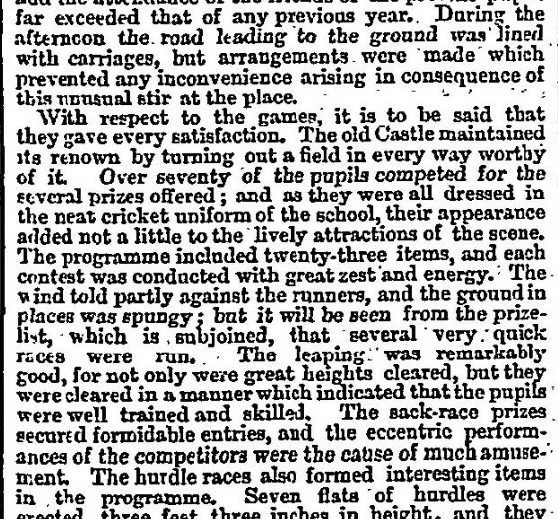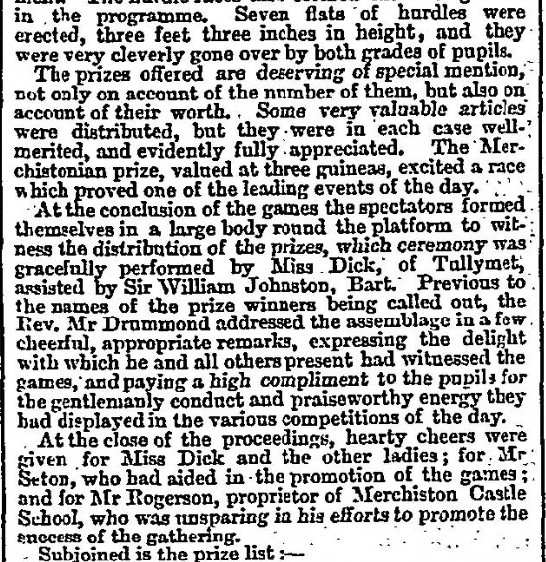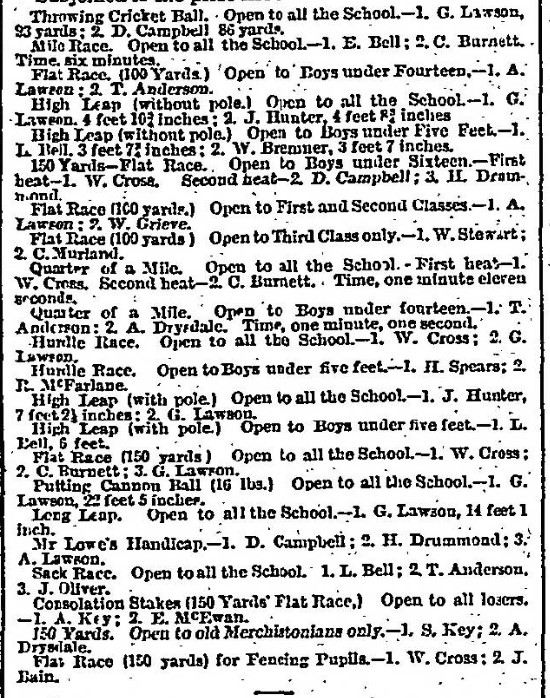The picture below is of Santini from West Calder High winning the 100 yards at the Inter-Scholastics in Edinburgh on 17th May, 1930. Interestingly the caption describes him as winning at the the SAAA. The ‘Scotsman’ report follows.
Note some of the schools participating in the open events (ie Over 16) whose names we might not have noticed before – eg Lenzie Academy, Broxburn and North Kelvinside
Following his career – in the Under 16’s the name of JRG Blamire which was first noted as winning the Under 14 100 yards in 1928 in 11.6 seconds and the 300 yards in the same year in in 41.2 seconds. He is seen in these results winning the Under 16’s 300 yards in 41.6 seconds, finishing second in the 100 yards, second in the broad jump and leading off for the winning Relay team. .
The meeting in 1931 was held on May 16th, again at Inverleith. Two of the winners are pictured above and with one from Edinburgh and one from Glasgow the Edinburgh-Glasgow balance was struck. We note also that the standard programme of 20 events was adhered to and that there were 30 schools taking part. And JR Blamire is now in the Open (ie over 16) events and a member of the second placed relay team. Report and results from the ‘Scotsman’ below.
*
The event was next held on 21st May, 1932 and was previewed as below in the ‘Edinburgh Evening News’. Note the venue – not any of the more usual venues but the relatively little known Helenvale Park. Helenvale had a very good track on which many excellent times were set at their annual sports meetings. These were over all distances not just for sprints or for distance runners and the Irish John Joe Barry set a world best for the 1000 yards there. The track was also surrounded by a good stepped terracing which helped spectators view proceedings. Last year’s entry of 30 schools had come up to 46.
The report from the Herald:
The range of schools was wider still with such as McLaren High from Callander, Dunfermline High School Ardrossan Academy, Waid Academy as well as the many from Glasgow and Edinburgh and their environs.
The photograph comes from the local Hawick News on 21st May in 1933 when there were 37 schools involved. There was a lot of coverage in local papers up and down the land. Local schools were mentioned in the Kirkintilloch Herald (Lenzie Academy and St Ninians were to enter teams), The Wishaw Press (Dalziel High School: pupil won the 100 yards), St Andrews citizen (Madras boy was second in the shot putt) and many more areas had selected results published. The only national to cover the event in its entirety was the ‘Glasgow Herald’ whose report and results are here.
*
The above photograph appeared in the ‘Aberdeen Press and Journal’ on 19th May in 1934 above the following article celebrating the local Grammar School’s first time entry to the Inter-Scholastics which were to be held in Glasgow, again at Helenvale Park.
Coverage of the event was for some reason difficult to find. A hint of a possible reason is in this snippet from the ‘Wishaw Press’.
Bad weather cancelled the field events. And probably affected the crowd and maybe even lost some runners from the meeting too. The ‘Glasgow Herald’ had some little coverage, and the only online version is a bit blurred and smudged although most of it is easily readable.
Note the name of the winner of the Mile – JN (Ian) Lapraik who would go on to be a very good runner at Glasgow University and in Scottish athletics generally before serving in the Army in the 1939-45 War.
